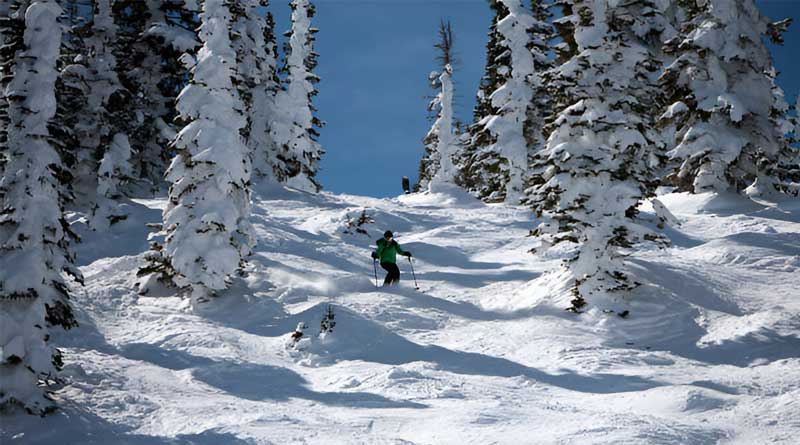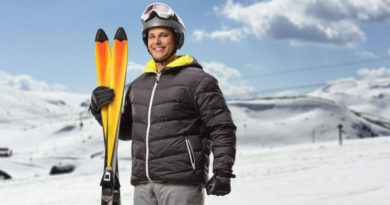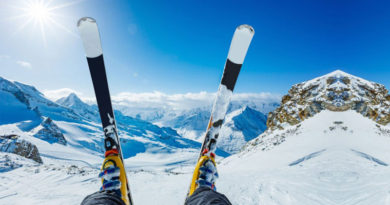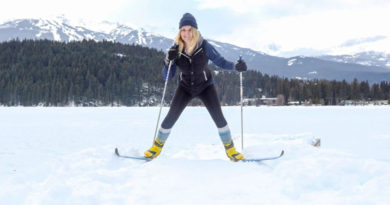What Is Mogul Skiing? A Complete Guide
Mogul skiing is a thrilling and technically demanding form of alpine skiing that involves navigating a field of tightly packed snow mounds, known as moguls. These bumps form either naturally through repeated turns on a ski slope or are purpose-built for training and competition. It blends speed, precision, and agility, demanding strong technique and athletic ability from skiers. Popular among recreational skiers and professionals alike, it is also a recognized Olympic discipline.
The Origin of Moguls
The word mogul comes from the Austrian-German word mugel, meaning “small hill” or “mound.” Moguls first emerged organically as skiers turned and carved down the mountain, pushing snow to the side. Over time, these mounds hardened and evolved into a distinctive terrain feature. By the 1970s, it had gained enough popularity to be formalized as a competitive discipline.
In 1992, mogul skiing made its Olympic debut at the Albertville Winter Games as a freestyle skiing event. Since then, it has evolved with increased technical difficulty, aerial tricks, and precise judging criteria.
What Are Moguls?
Moguls are small bumps that form on ski slopes as a result of skiers making repeated sharp turns. Each turn pushes snow to the outside, creating a series of ridges and troughs. These bumps are typically spaced about 3 to 4 meters apart and can vary in size depending on the slope and snow conditions.
In competition, moguls are constructed in consistent, symmetrical lines to test skiers’ technical ability. In natural settings, they are more irregular, making recreational mogul skiing an even greater challenge.
The Art and Technique of Mogul Skiing
At its core, mogul skiing demands a unique set of skills. Skiers must stay balanced while rapidly turning around each bump, absorbing shocks with their legs and maintaining a consistent rhythm. The skier’s knees and ankles act as shock absorbers, flexing and extending as they navigate the terrain. Upper body control is crucial: while the legs are constantly in motion, the upper body should remain stable and facing downhill.
Advanced skiers often use a technique called “absorption and extension.” This allows them to stay close to the snow and maintain a smooth ride despite the harsh terrain. Speed, fluidity, and precision all come into play, making it both physically taxing and visually captivating.
Mogul Skiing in Competition
In competitive mogul skiing, athletes race down a steep course (usually with a 28° incline) covered in symmetrical moguls. Each run also includes two designated jumps or kickers, where skiers perform aerial maneuvers such as backflips, 360s, or off-axis spins. A typical mogul run lasts 20–30 seconds but packs in a tremendous amount of athletic intensity.
Scoring in mogul skiing is based on three main components:
-
Turns (60%) – Judges evaluate the skier’s technique, control, and rhythm while turning through the moguls.
-
Air (20%) – Points are awarded for the complexity and execution of aerial tricks.
-
Speed (20%) – Skiers are timed from top to bottom, with faster times earning higher scores.
Together, these factors reward both technical mastery and showmanship.
Equipment for Mogul Skiing
Unlike standard alpine skis, mogul skis are typically:
-
Shorter and narrower – This allows quicker turns and better control in tight bump lines.
-
Softer flex – Easier to absorb shocks and maintain smooth contact with the snow.
-
Twin-tips (in some cases) – Helpful for freestyle tricks, though not mandatory.
Other essential gear includes:
-
Tightly fitting boots – Offering more precise control.
-
Shorter poles – To allow faster planting between moguls.
-
Padded clothing and back protectors – To reduce the risk of injury on hard impacts.
Helmets and goggles are essential, as mogul skiing can be dangerous without proper protection.
Physical and Mental Challenges
Mogul skiing is one of the most physically demanding forms of skiing. The repeated knee-bending motion can be brutal on the joints, particularly the knees, hips, and lower back. It requires excellent cardiovascular endurance, lower-body strength, and fast reflexes.
Mentally, skiers must maintain focus and composure while reacting rapidly to changing terrain. Confidence, muscle memory, and a strong understanding of ski dynamics are critical for success.
Training for Mogul Skiing
Training involves a combination of on-snow practice, gym work, and aerial skills. On the slopes, skiers focus on carving smooth, fast lines through the bumps and practicing absorption. In the gym, leg strength, balance, and core stability are major areas of focus.
Aerial training often begins on trampolines or into water ramps before progressing to snow jumps. This ensures safety and allows skiers to perfect their form without the risk of hard landings.
Freestyle Culture and Appeal
Mogul skiing belongs to the broader world of freestyle skiing, which also includes disciplines like aerials, slopestyle, and halfpipe. Its mix of technique and flair appeals to a younger, more adventurous crowd. Athletes often bring a creative edge to their skiing, developing signature tricks and styles.
The sport’s fast pace and high visual appeal have made it a hit at events like the Winter X Games and the Olympics, drawing large crowds and global audiences.
Safety Tips for Mogul Skiers
If you’re new, here are a few safety and progression tips:
-
Start small – Begin on beginner bump runs or uneven terrain before attempting larger moguls.
-
Take a lesson – Professional instructors can help you master the basics more quickly and safely.
-
Work on your fitness – Strengthen your core, legs, and flexibility before diving in.
-
Wear protective gear – A helmet, padded clothing, and knee braces can help prevent injury.
-
Know your limits – Don’t push too hard, especially in poor visibility or icy conditions.
Conclusion
Mogul skiing is a dynamic and demanding sport that combines the finesse of technical skiing with the excitement of freestyle. Whether you’re watching Olympic athletes perform breathtaking aerials or carving through bumps on a weekend trip, it is a thrilling part of the ski world. It rewards patience, practice, and physical fitness—but also delivers unmatched satisfaction once mastered.
Whether you’re a recreational skier curious about moguls or an aspiring freestyler eyeing competition, this discipline offers challenge and fun in equal measure. With the right gear, proper training, and a bit of courage, anyone can learn to enjoy the bumps.




